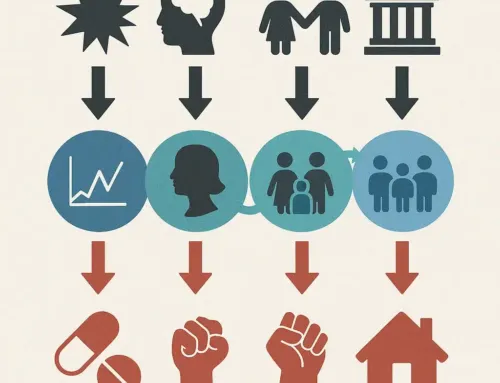
Approx. read time: 6.9 min.
Post: The Vital Role of Fiber in Everyday Health and Disease Prevention
Importance of Fiber in Everyday Health
Table of Contents
- Introduction
- The Importance of Fiber in Everyday Health
- Recommended Daily Intake of Fiber
- High-Fiber Foods
- General Diet Plan to Ensure Adequate Fiber Intake
- Conclusion
Introduction
The Importance of fiber in everyday health often referred to as roughage, is a type of carbohydrate that the body cannot digest. While most carbohydrates are broken down into sugar molecules, fiber cannot be broken down into sugar molecules and instead passes through the body undigested. Fiber is crucial for maintaining a healthy digestive system, preventing various diseases, and promoting overall wellness. This article explores the importance of fiber, recommended daily intake, fiber-rich foods, and a general diet plan to ensure adequate fiber consumption.
The Importance of Fiber in Everyday Health
Digestive Health
Fiber plays a pivotal role in maintaining a healthy digestive system. It adds bulk to the stool, which helps in regular bowel movements and prevents constipation. A high-fiber diet can also reduce the risk of developing hemorrhoids and diverticulitis, a condition characterized by the inflammation of pouches that can form in the intestines.
Weight Management
Incorporating fiber into your diet can aid in weight management. High-fiber foods are more filling than low-fiber foods, which means you’re likely to eat less and stay satisfied longer. This can help prevent overeating and assist in maintaining a healthy weight.
Blood Sugar Control
Fiber, particularly soluble fiber, can help regulate blood sugar levels by slowing the absorption of sugar. This can prevent blood sugar spikes and crashes, which are particularly beneficial for individuals with diabetes or those at risk of developing diabetes.
Heart Health
A diet high in fiber has been linked to a lower risk of heart disease. Soluble fiber, found in foods like oats, beans, and flaxseed, can help lower cholesterol levels by binding to cholesterol particles and removing them from the body. This can lead to improved cardiovascular health and a reduced risk of heart attacks and strokes.
Cancer Prevention
Studies have shown that a diet high in fiber may lower the risk of certain types of cancer, including colorectal cancer. The exact mechanism is not entirely understood, but it is believed that fiber helps to move carcinogens through the digestive tract more quickly, reducing the amount of time they spend in contact with the intestinal lining.
Recommended Daily Intake of Fiber
The recommended daily intake of fiber varies by age and sex:
- Children (1-3 years): 19 grams
- Children (4-8 years): 25 grams
- Boys (9-13 years): 31 grams
- Girls (9-13 years): 26 grams
- Boys (14-18 years): 38 grams
- Girls (14-18 years): 26 grams
- Men (19-50 years): 38 grams
- Women (19-50 years): 25 grams
- Men (51 years and older): 30 grams
- Women (51 years and older): 21 grams
It is important to gradually increase fiber intake to avoid digestive discomfort, and to ensure adequate fluid intake to help fiber work effectively in the body.
High-Fiber Foods
Incorporating a variety of high-fiber foods into your diet can help you meet your daily fiber requirements. Here are some excellent sources of fiber:
Fruits
- Apples (with skin)
- Pears (with skin)
- Berries (raspberries, blackberries, strawberries)
- Oranges
- Bananas
Vegetables
- Broccoli
- Carrots
- Brussels sprouts
- Green peas
- Spinach
Grains
- Whole grain bread
- Brown rice
- Oats
- Quinoa
- Barley
Legumes
- Lentils
- Black beans
- Chickpeas
- Kidney beans
- Split peas
Nuts and Seeds
- Almonds
- Chia seeds
- Flaxseeds
- Walnuts
- Sunflower seeds
General Diet Plan to Ensure Adequate Fiber Intake
Here is a sample diet plan to help you incorporate enough fiber into your daily diet:
Breakfast
- Option 1: A bowl of oatmeal topped with berries and a tablespoon of chia seeds.
- Option 2: Whole grain toast with avocado and a side of orange slices.
Mid-Morning Snack
- Option 1: An apple with a handful of almonds.
- Option 2: Greek yogurt with a tablespoon of flaxseeds.
Lunch
- Option 1: A quinoa salad with black beans, corn, tomatoes, and spinach, drizzled with olive oil and lemon juice.
- Option 2: A whole grain wrap filled with hummus, shredded carrots, cucumber, and mixed greens.
Afternoon Snack
- Option 1: Carrot sticks with hummus.
- Option 2: A pear with a handfulof walnuts.
Dinner
- Option 1: Grilled chicken breast with a side of steamed broccoli and brown rice.
- Option 2: Lentil soup with a side of whole grain bread and a mixed green salad.
Evening Snack
- Option 1: Air-popped popcorn.
- Option 2: A small bowl of mixed berries.
Conclusion
Fiber is a vital component of a healthy diet, offering numerous benefits for digestive health, weight management, blood sugar control, heart health, and cancer prevention. By understanding the recommended daily intake of fiber and incorporating a variety of high-fiber foods into your diet, you can significantly improve your overall health and well-being. Remember to increase your fiber intake gradually and drink plenty of water to support the beneficial effects of fiber. Following a balanced diet plan that includes fiber-rich foods will help you achieve and maintain optimal health.









